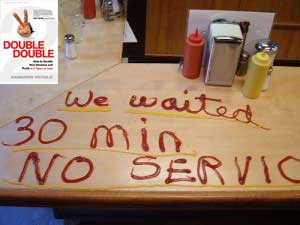 Here’s how you figure out technology: Hire a bunch of 25 year-olds! Seriously. Why are you trying to figure it out? They already know it!
Here’s how you figure out technology: Hire a bunch of 25 year-olds! Seriously. Why are you trying to figure it out? They already know it!
I was in an Apple store in Portland a few years ago to purchase a laptop bag and when I wanted to pay I was looking around saying, “Where’s the cashier? There’s no cashier!” My buddy Josh, who was standing beside me (and 33 years old, I might add) said, “They’re different here!”
Josh then instructed me to put my hand up. As soon as I did, two people rushed over with hand-held terminals and asked, “Would you like to cash out?”
They took my merchandise, scanned the tags, swiped my credit card, and said, “Would you like us to email you a receipt or would you like me to print one out right now?” No waiting in line, nothing.
The 25 year old tech-savvy generation make everything go a little bit faster and more efficient.
Scout for younger people on Facebook, Twitter or Craigslist. Ask them to teach you little tech hacks to make your business run simpler and faster. You don’t need to be a 20-something, just make sure you keep up with them.
 I’ve started to get tired of hearing CEOs raving about their customer service. Our call center team is great. We answer calls quickly. Our online chat is busier than ever. Our customers rate our customer service team an XYZ… Our cost to handle customer calls is at the industry average…
I’ve started to get tired of hearing CEOs raving about their customer service. Our call center team is great. We answer calls quickly. Our online chat is busier than ever. Our customers rate our customer service team an XYZ… Our cost to handle customer calls is at the industry average… Often the hardest part of dealing with conflict is removing the emotions and dealing with the issue at hand.
Often the hardest part of dealing with conflict is removing the emotions and dealing with the issue at hand.  Work to
Work to 



